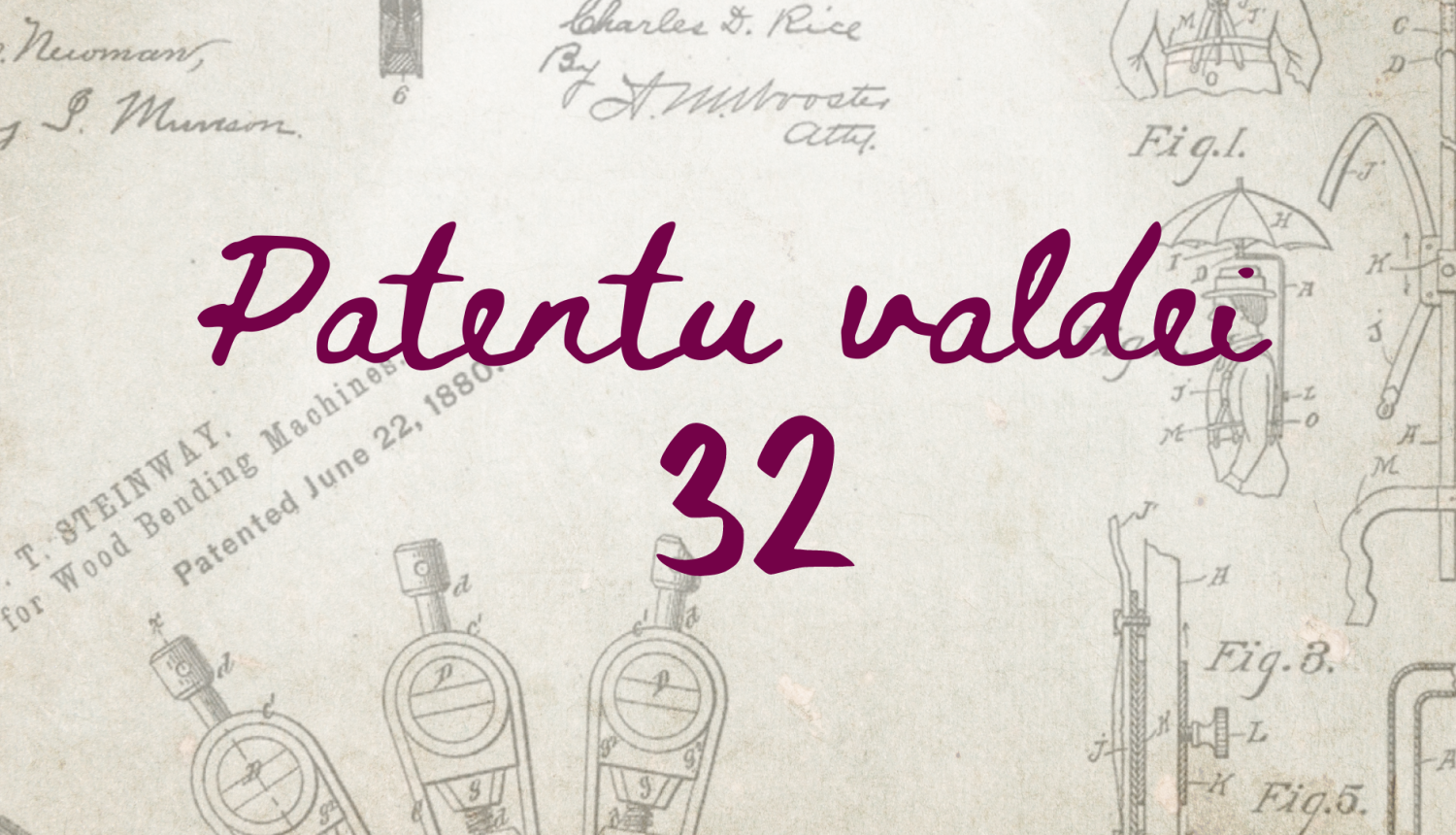2nd March 2024 marks 32 years since the Latvian Patent Office (LPO), a state institution whose task is to register industrial property (IP) rights, promote the importance of IP protection among the public and strengthen its value, resumed its activities in independent Latvia.
The LPO has a history of more than 100 years. It was founded already in the first period of independence of the Republic of Latvia - on 9th February 1920. The system of IP protection worked until the state occupation on 17th June 1940, when Latvia lost its national independence, and the system of IP protection ceased to function in a way it does in an independent state.
After the restoration of Latvia's independence and based on the decision of the Supreme Council of Latvia "On the renewal of the Patent Office of the Republic of Latvia", the Council of Ministers adopted the decision "On the establishment of the Patent Office" on 19th February 1992, and the renewed LPO started its activities on 2nd March 1992.
In the interwar period, the LPO’s staff comprised two to four permanent employees. There were, on average, 350 patent applications per year for the protection of various inventions and technical solutions. Most of the applicants were foreigners. E.g., in 1926, out of 205 invention patents, the larger number was granted to German citizens (76), followed by citizens of Latvia (57), Sweden (12), France (8), Great Britain (7), and some other countries.
Some interesting facts about Latvian IP applications
The first protection certificates were issued by the LPO at the beginning of 1922 to Riga tobacco factory “A.S. Maikapar” for the trademark protection, and to Andrejs Golvers for the protection for his invention on improvements to a drum-driven mill.
The first Latvian applicants who were granted Latvian patents were farmer Jānis Prāts - for the method of and the machine for removing the seed heads from the flax stems, and inventor Jānis Minuss - for a portable indoor oven that could regulate the heated air flow.
The most commercially successful Latvian invention of the interwar period was a device created by Indriķis Pērkonis which made it possible to sew carpets using an ordinary sewing machine. In 1931 I. Pērkonis sold his patent to the famous Singer Manufacturing Company, which used the invention to improve its sewing machines.
One of the most famous inventors is aircraft designer Kārlis Irbītis, under whose leadership the State Electrotechnical Factory (VEF) built 33 different types of aircraft until 1942, which were successful in aviation competitions in France, England, Switzerland, Finland, and Sweden, and made flights of an impressive distance for those times.
In the thirties of the 20thcentury, Walter Zapp, an inventor of Baltic-German origin, designed the famous Minox camera, which was often called a spy camera due to its miniature size, and for many years it was a working tool of the secret services of various states. From 1938 to 1942, VEF produced 17,000 Minox cameras and exported them to various countries around the world.
“Creative” Latvian inventions
- An electric bedbug killer with a built-in electric device that is attached to a bed in such a way that an electric current flows through the bed and the bedbugs residing there. The electricity either kills or frightens the bedbugs and they leave the bed immediately. The patent application does not specify what happens to the sleeper.
- Foot muffs to prevent corns.
- A hat cooling device – a moistened sponge that is placed between the hat and the head.
- A device for accurate beard length measurement.
- An automatic device to roll up trouser legs for a muddy weather.
- An improved and complemented kilometre counter attached to a spring-tooth harrow.
- An electric counter of the number of sausage slices for parties.
- A hydraulic hot potato weigher.
- A brass disk with an aluminium hook.
The LPO’s restoration in 1992 was followed by an active strengthening of the IP field. A number of relevant laws and regulations entered into force, and the LPO became a member of several international organizations. In 1993 the Republic of Latvia joined the Convention on the Establishment of the World Intellectual Property Organization, and in 2005 Latvia became the 31st member state of the European Patent Organization. With the accession to the European Union in 2004, Latvia automatically became a member state of the European Union Intellectual Property Office (formerly known as the Office for Harmonization in the Internal Market).
Until the beginning of 1993, the registration of IP rights was regulated by temporary regulatory acts. The second year of the LPO’s operation began with the adoption of the Patent Law, the Law on Trade Marks and Indications of Geographical Origin, and the Law on Design Protection. In the following years, these regulatory acts were further amended and substituted by the new ones.
Already on 19th March 1992, the LPO received the first patent application submitted by a foreign applicant, whereas the first trademark application was filed by a foreign applicant on 27th March 1992. The first international patent application was received by the LPO on 5th August 1994.
There have been nine directors and acting directors since the LPO’s restoration. Current director Agris Batalauskis has been leading the institution since 1st February 2022.



